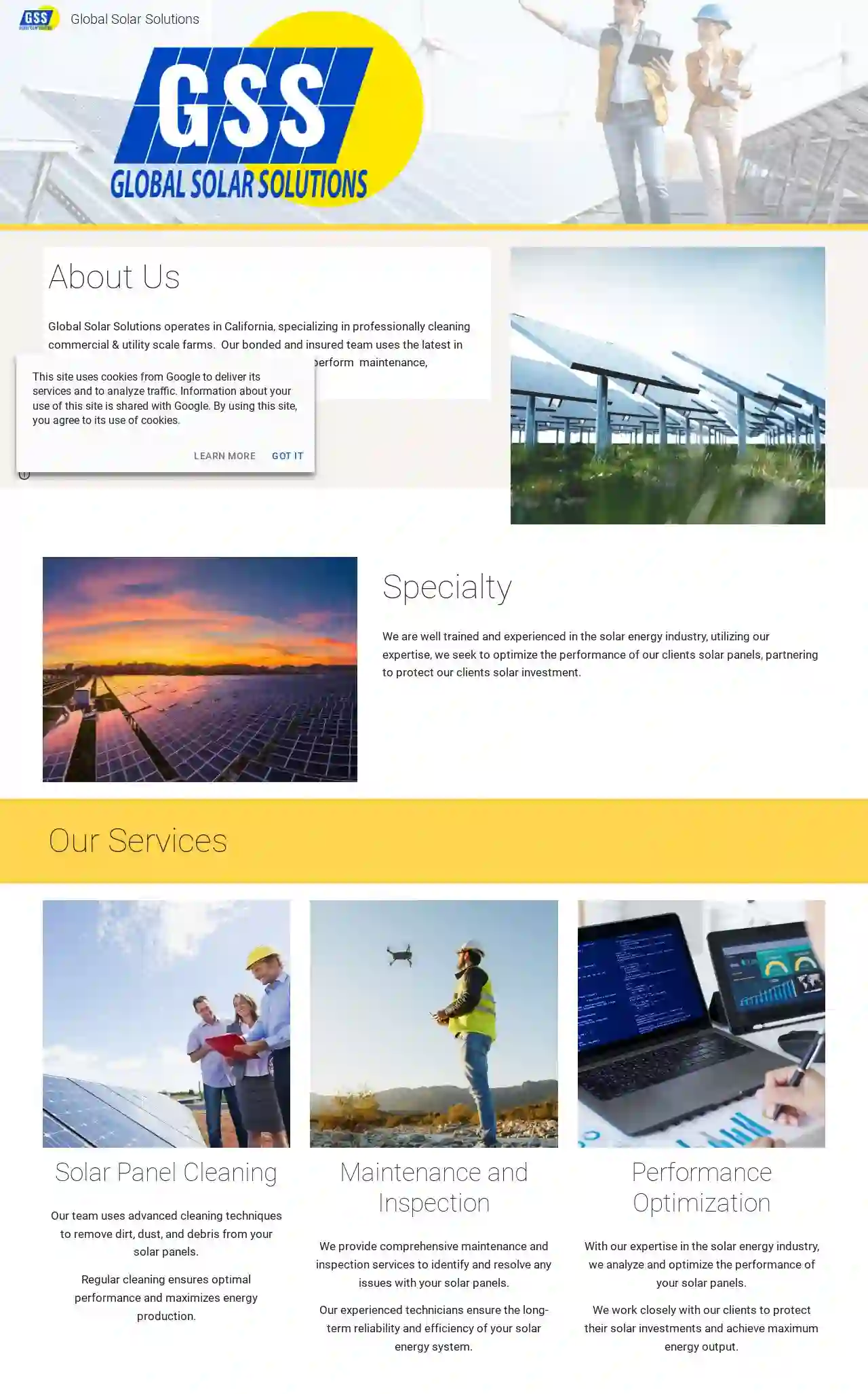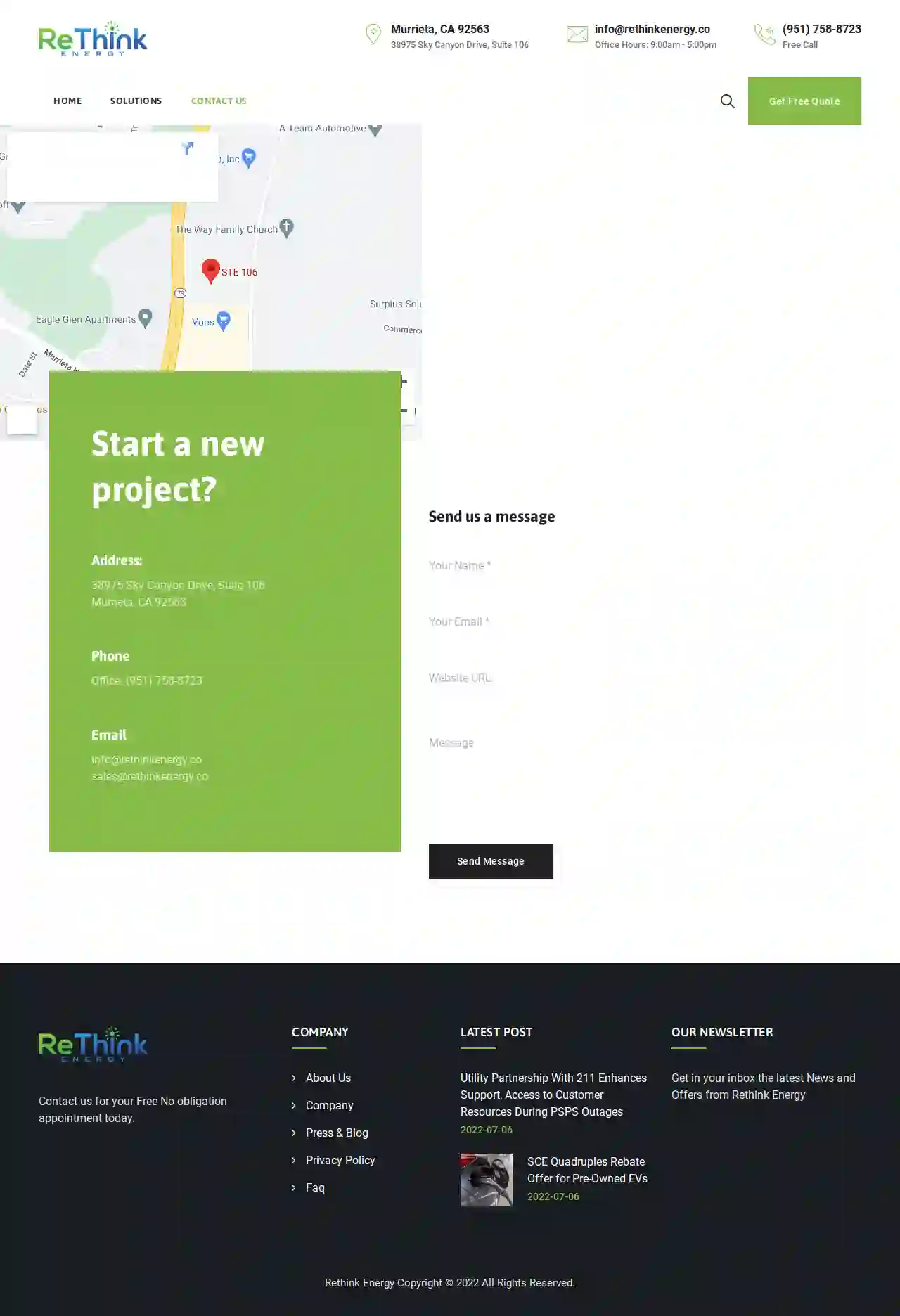Solar Installers Kensington
Top 10 Solar Panel Installer in Kensington
Receive up to 3 Solar Contractors quotes for your project today! Compare profiles, reviews, accreditations, portfolio, etc... and choose the best service.

Go Green Solar Solutions
4.76 reviews2829 Townsgate Road, Suite 100, N/A, Westlake Village, 91361, USGo Green Solar Solutions is the largest, most experienced and most innovative solar design and installation company in Southern California. We have been in business since 1981, are locally owned and operated, and have over 42 years of experience in solar solutions for custom homes.
- Services
- Why Us?
- Accreditations
- Our Team
- Testimonials
- Gallery
Get Quote
Solectric
4.935 reviewsSacramento, USSolectric is a trusted solar professional in Northern California, offering solar installations, batteries, and EV charging stations. With over 18 years of experience and a top 1% ranking among California's contractors, Solectric promises care and attention to detail in every service provided.
- Services
- Why Us?
- Accreditations
- Gallery
Get Quote
Global Solar Solutions
Global Solar Solutions, Solar Energy Industry, California, CA, USGlobal Solar Solutions operates in California, specializing in professionally cleaning commercial & utility scale farms. Our bonded and insured team uses the latest in innovative robotic technology to safely & efficiently perform maintenance, guaranteeing our work.
- Services
- Why Us?
- Gallery
Get Quote
Infinity Solar Systems Riverside
4.25 reviewsOrange, CA, 749 N Main St, 92868, USInfinity Solar is a leading provider of solar energy solutions in Southern California. With a focus on sustainability and customer satisfaction, they offer a range of services including solar panel installation, home battery solutions, and solar insurance. Their team of experts is dedicated to helping homeowners make the switch to solar energy and enjoy the benefits of renewable energy.
- Services
- Why Us?
- Accreditations
- Our Team
- Testimonials
- Gallery
Get Quote
Rethink Energy
212 reviews38975 Sky Canyon Drive, Suite 106, Murrieta, 92563, USRethink Energy is a company dedicated to providing energy-saving solutions to customers in California. They offer a variety of services including attic insulation, whole house fans, solar energy, efficiency lighting, and Nest thermostats. Rethink Energy partners with local utilities and governmental organizations to provide these services at little to no cost to the customer. They have been in business since 1999 and have successfully completed over 7000 projects, saving customers over $25 million in energy savings.
- Services
- Why Us?
- Accreditations
- Our Team
- Testimonials
- Gallery
Get Quote
Pacific Energy Group, Inc.
2136 Vista Laredo, Newport Beach, 92660, USPacific Energy Group Inc specializes in leasing land for solar development, providing a diversified and immediate long-term income stream for landowners. They offer consulting services including site assessment, acquisition services, and GIS solutions. The company aims to create a long-term partnership between landowners and solar developers, preserving existing lands for future production.
- Services
- Why Us?
Get Quote
Tom Semark Sunlove.us Solar and Roofing
59 reviews2683 Via de la Valle, # 321G, 2683 Via de la Valle # 321G, Del Mar, 92014-1911, USSunlove.us is a Public Benefit Corporation that specializes in solar, battery, and roofing services. The company is dedicated to providing world-class solar, energy storage, and roofing system engineering and construction services. Sunlove.us offers a 30-Year Powur Care Solar Warranty with Roof Leak Protection and is committed to keeping the clean energy economy growing vibrantly.
- Services
- Why Us?
- Accreditations
- Our Team
- Testimonials
- Gallery
Get Quote
GAF Energy
3.533 reviewsSan Jose, CA, USA, 5981 Optical Court, 95138, USGAF Energy is a leading provider of solar roofing solutions, offering homeowners and roofers a comprehensive range of products and services. Their flagship product, Timberline Solar, is a revolutionary solar shingle that protects and installs like a regular roof, providing clean energy and a sleek, uniform design. With over 133 years of experience in the U.S. market, GAF Energy is committed to creating American jobs and promoting sustainable energy solutions.
- Services
- Why Us?
- Accreditations
- Our Team
- Testimonials
- Gallery
Get Quote
Solar System, Inc.
411 reviews123 Solar Street, San Francisco, CA, 94103, USSolar System Inc. is a premier solar company in the Bay Area, offering a range of services including solar power, battery storage, roofing, and more. With over 10 years of experience in the solar industry and over 1,000 completed residential and commercial installations, they aim to provide high-quality services throughout every aspect of the customer's journey. Their mission is to save customers tens of thousands on their utility bills while preparing for an electric future.
- Services
- Why Us?
- Accreditations
- Our Team
- Testimonials
- Gallery
Get Quote
Solar Wholesale USA
51 reviews123 Solar Way, Suite 100, Los Angeles, 90001, USSolar Wholesale USA is a leading provider of solar solutions, serving California and Nevada since 2002. They offer a variety of high-quality solar products, including solar electric photovoltaic (PV) systems designed to help customers save money on their electricity bills. Their services include maintenance, ensuring that systems operate at peak efficiency, and commercial solutions for small businesses and building owners. With a commitment to providing the lowest prices on solar, Solar Wholesale USA aims to make solar energy accessible and affordable for all.
- Services
- Why Us?
- Accreditations
- Our Team
- Testimonials
- Gallery
Get Quote
Over 4,210+ Solar Businesses in our network
Our solar experts operate in Kensington and beyond!
SolarCompaniesHub has curated and vetted Top Solar Businesses in Kensington. Find a reliable business today.
Frequently Asked Questions About Solar Installers
- Keep Panels Clean: Clean panels periodically to remove dirt, debris, and bird droppings, which can reduce efficiency. Rainfall usually cleans panels adequately, but you might need to hose them down occasionally.
- Visual Inspections: Regularly inspect panels for signs of damage, loose wiring, or other issues.
- Professional Maintenance: Consider having a professional solar installer inspect your system every few years to ensure optimal performance.
- Tax Credits: Reduce your income tax liability based on the cost of your solar system.
- Rebates: Direct cash payments or discounts on the purchase of a solar energy system.
- Net Metering: Allows you to sell excess solar electricity back to the grid for credits.
- Renewable Energy Certificates (RECs): Tradeable credits representing the environmental attributes of your solar energy generation.
How do solar panels work?
How do I maintain my solar panels?
Can I go completely off-grid with solar panels?
Are there any financial incentives for going solar?
How do solar panels work?
How do I maintain my solar panels?
- Keep Panels Clean: Clean panels periodically to remove dirt, debris, and bird droppings, which can reduce efficiency. Rainfall usually cleans panels adequately, but you might need to hose them down occasionally.
- Visual Inspections: Regularly inspect panels for signs of damage, loose wiring, or other issues.
- Professional Maintenance: Consider having a professional solar installer inspect your system every few years to ensure optimal performance.
Can I go completely off-grid with solar panels?
Are there any financial incentives for going solar?
- Tax Credits: Reduce your income tax liability based on the cost of your solar system.
- Rebates: Direct cash payments or discounts on the purchase of a solar energy system.
- Net Metering: Allows you to sell excess solar electricity back to the grid for credits.
- Renewable Energy Certificates (RECs): Tradeable credits representing the environmental attributes of your solar energy generation.